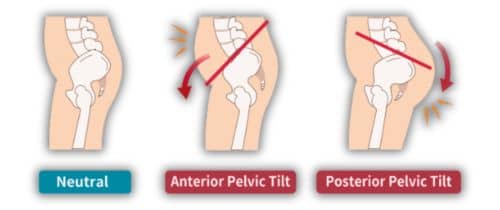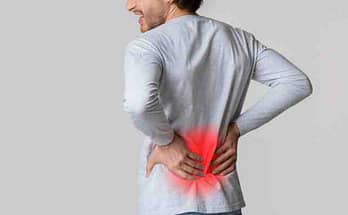Ergonomics is important because it focuses on creating efficient and comfortable environments that support the well-being of individuals. It plays a significant role in body alignment as it helps maintain proper posture, including the alignment of the pelvis and spine.
By implementing ergonomic measures such as adjusting chair height, using supportive seating, and practicing proper lifting techniques, individuals can prevent injuries, reduce pain, and improve their overall health. Additionally, incorporating ergonomic principles in workspaces can enhance productivity by minimizing fatigue and optimizing comfort, allowing individuals to perform tasks more effectively.
If your goal is to enhance your posture and holistic health, it’s vital to grasp the concept of ergonomics. Ergonomics revolves around designing and arranging items and spaces for optimal efficiency and comfort. It has a significant bearing on everyday life, influencing everything from your home’s layout to your office workstation’s setup.
By understanding and applying ergonomics in your daily life, you can significantly improve your health, comfort, and overall well-being.
| Key Takeaways |
|---|
| Ergonomics focuses on designing objects and spaces for efficiency and comfort. |
| Pelvic tilt refers to the angle and position of the pelvis in relation to the spine. |
| Office ergonomics can reduce the risk of musculoskeletal disorders and improve productivity and comfort at work. |
| Proper pelvic tilt can alleviate lower back, hip, and leg pain. |
| Adjusting chairs and maintaining good standing posture can help improve pelvic tilt. |
| Ergonomics can help maintain a neutral pelvic tilt and improve posture. |
| Understanding and applying ergonomics in daily life can enhance productivity, reduce fatigue, and prevent pain and injuries. |
| Correcting posture and addressing pelvic tilt issues can be achieved through ergonomic measures. |
| Prioritizing pelvic health is essential for overall well-being. |
| By incorporating ergonomics and making posture adjustments, you can improve your health and comfort. |
Understanding Ergonomics and Pelvic Tilt
If your goal is to enhance your posture and holistic health, it’s vital to grasp the concept of ergonomics. Ergonomics revolves around designing and arranging items and spaces for optimal efficiency and comfort. It has a significant bearing on everyday life, influencing everything from your home’s layout to your office workstation’s setup.
By taking note of office ergonomics, which includes workstation configuration, ergonomic chairs, and keyboards, you can lower your risk of developing musculoskeletal disorders while boosting productivity and comfort at work.
Defining Ergonomics and its Importance
A comprehensive understanding of ergonomics is beneficial for your health and posture, as it assists in maintaining proper body alignment and mitigating injury or discomfort risks. Ergonomics revolves around crafting tools, equipment, and work environments to ensure safety, comfort, and efficiency.
Appropriate ergonomics can prevent musculoskeletal disorders such as carpal tunnel syndrome and back pain. One key aspect of ergonomics is posture correction, particularly in relation to pelvic tilt. Pelvic tilt refers to the body’s pelvis position, and it significantly influences your overall body alignment.
Proper pelvic tilt can relieve pressure on your lower back, hips, and legs, while improper pelvic tilt can cause pain and discomfort. By integrating office ergonomics and suitable workstation setup, you can bolster your posture and overall health.
The Role of Ergonomics in Daily Life

Ergonomics, a unique field that studies our interactions with the environment, has a profound effect on our professional and personal lives. Its principles aim to create a safer, more comfortable, and efficient environment, promoting optimal performance while reducing discomfort and injury.
Here’s a more detailed look at why ergonomics is a crucial aspect of our daily life:
- Boosts Productivity: The integration of ergonomic principles and lifestyle modifications can significantly enhance productivity.
- Mitigates Fatigue: The application of ergonomics can help alleviate fatigue, reducing muscle soreness and leading to enhanced performance.
- Wards Off Pain and Injury: Everyday activities like prolonged computer use, holding the phone to your ear, slouching in a chair, or carrying groceries can lead to painful body conditions. These issues can be mitigated or even prevented by integrating good ergonomic practices into our daily routines and workplaces.
- Enhances Posture: Ergonomics offers the tools to improve posture, making day-to-day tasks more comfortable and reducing the risk of musculoskeletal problems.
- Elevates Comfort Levels: Ergonomics paves the way for healthier, pain-free individuals who are more engaged and productive in their tasks.
- Preserves Bone and Joint Alignment: Proper posture and ergonomics maintain the alignment of bones and joints, ensuring that muscles function correctly.
- Amplifies Breathing and Blood Circulation: Good posture facilitated by ergonomics can notably enhance breathing and blood circulation, contributing to overall wellness.
Understanding and applying ergonomics in daily life can lead to significant improvements in your health, comfort, and efficiency. By making a few simple changes, you can reap the long-term benefits of this transformative discipline (ergonomics).
Office Ergonomics: Workstation Setup

Enhance your comfort and productivity at work by configuring your workstation with an ergonomic chair and keyboard. Office ergonomics plays a crucial role in maintaining postural balance and reducing the risk of health issues associated with extended sitting.
Pelvic tilt is a significant factor in maintaining good posture, and an ergonomic chair can assist in preventing excessive pelvic tilt that could result in lower back pain.
An ergonomic chair with adjustable height, lumbar support, and a comfortable seat can help maintain a neutral spinal posture. The chair’s height should be adjusted such that your feet rest flat on the ground, and your knees form a 90-degree angle.
An ergonomic keyboard can also aid in maintaining your wrists and hands’ natural curvature, reducing the risk of carpal tunnel syndrome. The table below offers a quick guide to workstation setup and the benefits of ergonomic chairs and keyboards.
| Workstation Setup | Benefits of Ergonomic Chair | Benefits of Ergonomic Keyboard |
|---|---|---|
| Adjust chair height for feet flat on the ground and knees at a 90-degree angle | Maintains neutral spinal posture and prevents excessive pelvic tilt | Reduces the risk of carpal tunnel syndrome |
| Use lumbar support for lower back | Reduces lower back pain | Maintains natural curvature of wrists and hands |
| Choose a comfortable seat | Improves comfort and productivity | |
| Adjust monitor height for eye level | Reduces neck strain | |
| Keep mouse close to keyboard | Reduces reaching and shoulder strain |
Incorporating an ergonomic chair and keyboard into your workstation setup can significantly improve your comfort and productivity at work. Investing the time to tailor your workstation to fit your body can offer substantial benefits, including maintaining good posture and reducing health risks associated with prolonged sitting.
Understanding Pelvic Tilt

Interested in understanding pelvic tilt?
Simply put, pelvic tilt refers to your pelvis’s angle and position concerning your spine. Factors like poor posture, tight muscles, or injuries can induce it, leading to outcomes such as back pain, hip pain, and limited mobility. Understanding pelvic tilt can empower you to enhance your posture and evade these negative effects
Defining Pelvic Tilt
Think of your pelvis as a bowl capable of tilting forwards or backwards, influencing the alignment of your spine and overall posture.
Your pelvis maintains a natural alignment that can be affected by your daily activities like prolonged sitting or standing. Your posture can also suffer due to pelvic tilt, potentially leading to musculoskeletal disorders if not rectified.
To comprehend pelvic tilt more effectively, remember these three key points:
- Anterior pelvic tilt is when the front of your pelvis tilts downwards, causing your lower back to arch excessively. This can lead to low back pain and poor posture.
- Posterior pelvic tilt is when the back of your pelvis tilts downwards, causing your lower back to round excessively. This can lead to tight hip flexors and weak glutes.
- Corrective exercises can help improve pelvic alignment and posture. Strengthening your core and glutes, and stretching your hip flexors can help correct pelvic tilt and improve your overall health.
So, pay attention to your pelvic tilt and incorporate ergonomics and corrective exercises into your daily routine to maintain good posture and avoid musculoskeletal disorders.
DR. Alexander Green
Causes and Implications of Pelvic Tilt
You may not realize it, but your daily habits could be causing your pelvis to tilt in ways that negatively impact your body’s alignment and movement. Everything from the way you sit at your desk to the way you sleep at night can contribute to pelvic tilt. If left unchecked, this can lead to a range of negative consequences for your spinal health, including lower back pain, poor posture, and reduced mobility.
One of the most common causes of pelvic tilt is sitting posture. Many of us spend hours every day hunched over a desk, which can cause our pelvis to tilt forward and disrupt the lumbopelvic rhythm. This can put unnecessary strain on the lower back muscles, which can lead to pain and discomfort over time.
If you’re experiencing lower back pain, it may be worth seeking physiotherapy to address any underlying issues with your pelvic health. By correcting your posture and addressing any underlying issues, you can improve your spinal health and reduce the risk of long-term damage.
| Causes of Pelvic Tilt | Consequences of Pelvic Tilt |
|---|---|
| Poor sitting posture | Lower back pain |
| Sedentary lifestyle | Poor posture |
| Pregnancy | Reduced mobility |
| Tight hip flexors | Pelvic floor dysfunction |
| Imbalanced muscle development | Reduced athletic performance |
Ergonomics and Pelvic Tilt
Modifying your chair for a neutral pelvic tilt can mitigate lower back pain induced by inadequate posture. When seated for prolonged durations, it’s crucial to adjust your chair so that your feet rest flat on the floor, your knees form a 90-degree angle, and your hips align level. This facilitates maintaining a neutral pelvic tilt, preventing excessive pressure on your lower back.
Besides chair adjustments, scrutinize your standing posture and body mechanics. Poor standing posture can contribute to pelvic tilt and lower back pain.
For good standing posture, hold your shoulders back, elevate your chest, and keep your knees slightly bent. This helps maintain a neutral pelvic tilt and evenly distributes body weight.
Lastly, incorporate core stability exercises and biomechanical training to bolster pelvic stability and curb pelvic tilt. Exercises like planks, bridges, and pelvic tilts can fortify muscles supporting the pelvis and lower back. Ergonomic solutions such as standing desks and adjustable chairs also help prevent pelvic tilt and improve overall posture. Integrating these strategies into your daily routine can alleviate lower back pain and enhance your overall health and well-being.
The Influence of Pelvic Tilt on Posture
Pelvic tilt substantially impacts your posture, influencing how you stand and sit. If your pelvis tilts excessively forward or backward, it can disrupt spinal alignment, causing discomfort or pain.
Understanding the link between pelvic tilt and spinal alignment enables you to adjust your posture for improved overall health and well-being.
Pelvic Tilt and Its Effect on Standing and Sitting Posture
Proper pelvic tilt is pivotal for maintaining good posture, while poor posture can trigger discomfort and pain. When standing, pelvic tilt impacts the alignment of the spine and shoulders.
Anterior pelvic tilt, where your pelvis tilts forward, can cause your lower back to arch excessively, resulting in lower back pain. Conversely, a posterior pelvic tilt, where your pelvis tilts backward, can make your upper back round forward, causing upper back pain and neck strain. Sitting posture also falls prey to pelvic tilt.
Given our largely sedentary lifestyle and occupational health requirements, most people spend a significant part of their day sitting.
Poor sitting posture can lead to musculoskeletal pain, affecting overall health. Your pelvis should be in a neutral position when seated, neither tilting too forward nor backward. Ergonomic design of the chair and desk can assist in maintaining proper posture. Additionally, strengthening exercises and pelvic exercises can enhance pelvic tilt and prevent back pain.
Pelvic Tilt and Spinal Alignment: The Connection
Maintaining a neutral pelvic position is critical to keeping your spine correctly aligned and avoiding discomfort. A tilted pelvis can cause your spine to curve unnaturally, leading to issues like lower back pain, sciatica, and even postural abnormalities.
Understanding the link between pelvic tilt and spinal alignment allows you to take steps to improve your posture and overall health. Here are some key points:
- Postural analysis can help identify any imbalances or asymmetries in your pelvis and spine.
- Corrective ergonomics, such as adjusting your chair or using lumbar support, can help improve your posture and reduce discomfort.
- Tight hip flexors can contribute to pelvic tilt, so incorporating stretches and exercises that target this area can be beneficial.
- Lower crossed syndrome is a common condition associated with pelvic tilt, which involves a pattern of muscle imbalances in the hips and lower back. Addressing this syndrome through targeted exercises and stretches can help improve pelvic and spinal alignment.
Health Improvement through Ergonomics
You can enhance your health by infusing ergonomics into your daily routine, making minute adjustments to your posture and workspace. Ergonomics is the science that optimizes the design and arrangement of things for safe and efficient use. Applying ergonomic principles to your workspace can prevent musculoskeletal disorders, improving your overall health.
Maintaining a neutral spine is key to improving musculoskeletal health. This involves keeping your spine in a position that minimizes stress on your muscles, ligaments, and joints.
To achieve a neutral spine, maintain proper pelvic tilt by sitting with your hips at a 90-degree angle and your feet flat on the ground. Adjusting your seat height, backrest, and armrests also promotes good posture. Several posture improvement techniques can help you maintain a neutral spine and prevent health risks associated with poor posture. These include adjusting your monitor height, using a keyboard tray or stand, and taking frequent breaks for standing and stretching. The table below provides key workplace posture adjustments for improved musculoskeletal health.
Ergonomic Products
Ergonomic Chairs: Support your posture and comfort during work or study with ergonomic chairs designed for optimal back support. Find the perfect ergonomic chair on Amazon.
Standing Desks: Improve your productivity and well-being by exploring height-adjustable standing desks for a healthier work environment. Discover a range of standing desks on Amazon.
Ergonomic Keyboards and Mice: Upgrade your typing experience with ergonomic keyboards and mice that promote a natural hand and wrist position. Check out ergonomic keyboards and mice on Amazon.
Lumbar Supports: Alleviate lower back discomfort and maintain proper spinal alignment with supportive lumbar cushions. Find the ideal lumbar support on Amazon.
| Adjustment | Description | Benefits |
|---|---|---|
| Monitor height | Adjust your monitor so that the top of the screen is at or slightly below eye level | Reduces neck and eye strain |
| Keyboard tray or stand | Use a keyboard tray or stand to keep your wrists in a neutral position | Reduces wrist strain and risk of carpal tunnel syndrome |
| Frequent breaks | Take short breaks every 30 minutes to stand up and stretch | Reduces back pain and improves circulation |
By incorporating ergonomics into your daily routine, you can improve your health and prevent the negative effects of bad posture. Start by making small adjustments to your workspace and posture, and continue to prioritize your musculoskeletal health by taking frequent breaks and maintaining a neutral spine. Remember, small changes can make a big difference in your overall wellbeing.
Enhancing Posture Through Ergonomic Measures
To augment your posture, the incorporation of ergonomic solutions becomes imperative. First and foremost, it is crucial to comprehend the role of an ergonomic evaluation and its capacity to spotlight areas necessitating enhancement. Furthermore, applying apt lifting methodologies and refining your workspace arrangement are fundamental practices to secure superior posture and overall health.
The Significance of Ergonomic Evaluation: A Detailed Insight
An ergonomic evaluation of your workspace is instrumental in improving your posture while averting discomfort or pain. This evaluation entails a thorough analysis of your workstation, equipment, and work habits to identify potential problems that might lead to health concerns like back injuries.
Proactively addressing any issues recognized during an ergonomic evaluation, you can forge a safer and healthier work atmosphere.
While carrying out an ergonomic assessment, factors such as your pelvic tilt, posture, and overall health demand attention. Inadequate posture and support can escalate pressure on your lower back, resulting in discomfort or pain over time.
Minor changes such as adjusting your chair or monitor’s height can enhance your posture while mitigating the risk of health complications. Therefore, ergonomic evaluations are an integral component of workplace health and safety. By meticulously assessing your workspace, you ensure the optimum protection of your health and well-being.
Optimal Ergonomic Practices: Effective Lifting Techniques and Workspace Arrangement
Mastering efficient lifting strategies and organizing your workspace appropriately is critical in sidestepping the pitfalls of injuries and discomfort often linked to manual material handling. Let’s explore some impactful lifting methods and workspace configuration recommendations.
Harnessing Effective Lifting Tactics
- Back-Kind Bends: Adopt a strategy of bending your knees while keeping your back straight during lifting. This method significantly lessens the strain exerted on your back.
- Keeping Load Close: Hold the object close to your body, preferably near your center of gravity. This tactic simplifies the task of carrying.
- Twist-Free Transfers: Refrain from twisting your body while lifting, carrying, or placing a load. Instead, pivot your feet and rotate your whole body to avoid any strain.
- Preplanned Lifting: Anticipate the lift and locate secure handholds before you start. This makes the load less likely to slip.
- Regular Breaks: Incorporate frequent pauses in your routine to break the monotony of repetitive lifting. Include tasks that don’t require lifting and take stretching breaks to promote muscle relaxation.
Enhancing Workspace Arrangement
- Secure Passage: Maintain a clear and safe path, devoid of debris, obstacles, or stairs.
- Clear Vision: While carrying objects, ensure your line of vision remains unobstructed.
- Disassembly: If possible, dismantle larger objects into smaller, manageable parts.
- Assistive Tools: Use stools or ladders to reach loads placed above your shoulder height. Approach the load closely before sliding it towards you. Ensure you’re utilizing your arms and legs rather than your back.
- Sliding Over Lifting: Opt for sliding objects rather than lifting and carrying them whenever possible.
- Pushing Over Pulling: It’s better to push objects rather than pull them for ease of movement and safety.
- Employing Equipment: Use hand trucks and push carts to assist with moving objects. For excessively heavy items, don’t hesitate to request help from an authorized forklift operator.
By incorporating these lifting techniques and workspace arrangement guidelines, you can effectively minimize the risk of lower back pain and other injuries often caused by handling heavy objects.
Pelvic Health as a Cornerstone of Overall Well-being
Boosting your pelvic health can positively influence your overall well-being, facilitating a healthier and more comfortable lifestyle. The pelvic region plays a crucial role in supporting your upper body weight and assists in maintaining appropriate posture.
A healthy pelvic tilt fosters a healthy spine, corrects postural imbalances, and decreases the risk of pain and injury. Sustaining a healthy pelvic tilt involves a combination of exercises and stretches targeting your lower back, hips, and core muscles.
Workplace wellness practices and desk ergonomics can also contribute to better pelvic health. By modifying your chair height, employing a footrest, and positioning your computer screen at eye level, you can mitigate unnecessary strain on your lower back and pelvis. Here’s a quick guide to some beneficial exercises and stretches to jumpstart your pelvic health routine:
| Exercise/Stretch | Benefits |
|---|---|
| Pelvic Tilt | Strengthens lower back and pelvic muscles |
| Glute Bridge | Bolsters glutes and lower back muscles |
| Hip Flexor Stretch | Enhances hip mobility and diminishes lower back pain |
| Child’s Pose | Extends lower back muscles and augments flexibility |
Integrating these exercises and stretches into your everyday routine can lead to augmented pelvic health and overall well-being. By focusing on aspects such as exercise, health, and desk ergonomics, you can lessen the risk of postural dysfunctions and pain. Care for your body and your pelvic region, and they will reciprocate in kind.
Conclusion
By comprehending your body’s designed movements and functions, you can adopt straightforward steps to boost your posture, alleviate pain, and encourage overall well-being. Whether you’re spending the day sitting at a desk or involved in physical activities, remain aware of your pelvic tilt and make necessary posture adjustments.
With a modicum of effort and an emphasis on ergonomics, you can relish improved health and a more comfortable, pain-free life. So, sit up straight, engage your core muscles, and seize control of your posture and health.
Wanna Read More on Pelvic Tilt Correction?
- Mindfulness for Pelvic Tilt Correction and Well-Being
- Stop the Tilt: How Understanding Pelvic Tilt Can Alleviate Your Back Pain
- Unlocking the Power of Pelvic Tilt for Athletic Performance
- Age Gracefully: The Importance of Pelvic Tilt in Maintaining Posture and Movement as You Age
- Aligning the Body: How Yoga Can Correct Pelvic Tilt and Improve Your Health




